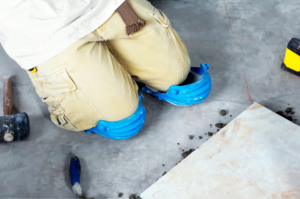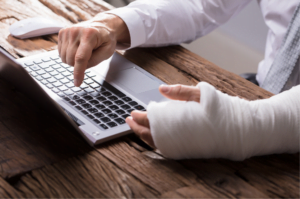


Have you been looking for a new desk chair? In your research, you may have discovered kneeling chairs and wondered if they were suitable for back pain sufferers.
Kneeling chairs were first created and marketed by Norwegian designers in the late 1970’s and early 1980’s. These chairs were influenced by sleek, simple Scandinavian design and were designed to encourage the body’s natural desire for movement.
In this article, we’ll discuss if kneeling chairs are worth the hype when it comes to reducing back pain.
Kneeling chairs come in many configurations. The most common are equipped with a forward-slanted seat pan with two backward-slanted shin pads. They’re ergonomically designed at a 20-degree incline to maintain lumbar curvature that’s more similar to standing posture compared to the typical alignment while seated in a standard computer chair. They usually come with a stationary base, although you can get models that allow for some movement or that come with a backrest.
The designers of these chairs claim that the slight forward tilt of the seat pan encourages neutral spinal alignment, which is more natural than a traditional office chair (like you may be sitting at now). This is true as it allows the sitter to position their hips at around a 60-70 degree angle, compared to the 90 degrees you get in a standard chair. With this more open hip position, your pelvis and lower back fall more naturally into alignment. If sitting in a traditional chair causes you lower back pain, kneeling chairs are said to alleviate that pain (while sitting).
So, is a kneeling chair the answer for lower back pain?
The neutral, upright posture is great, but it’s unsustainable for an 8-hour workday. The postural and core muscles that hold the upright posture will inevitably fatigue, leading to a slouched posture. This fatigue usually occurs when your core muscles tire within the first hour.
Much like the standing desks that are currently all the rage, sitting in a kneeling chair for the long term can actually cause the pain to return or get worse. They are best used in short sittings, 15-20 minutes, as a means of alternating static posture. What is needed for long term sitting is a sturdy and supportive backrest that can reduce the postural load on the muscles of the lower back and frequent movement opportunities.

Any chair that does not fit the user can result in suboptimal slouching postures that put the structures of the lower back under increased strain. If you don’t think a traditional office chair is right for you, it may be that it is not set-up to best support you.
Look for an office chair that encourages encourage optimal lower back posture through adjustments of the chair height, seat pan depth, and lumbar support:
Check out our Anatomy of a Chair article for more information on chair adjustments.
A comfortable chair can make you much more comfortable and provide spinal and postural support. Who knows, you may even become more productive, too!
For more ergonomics tips, visit the resource section of our website.






